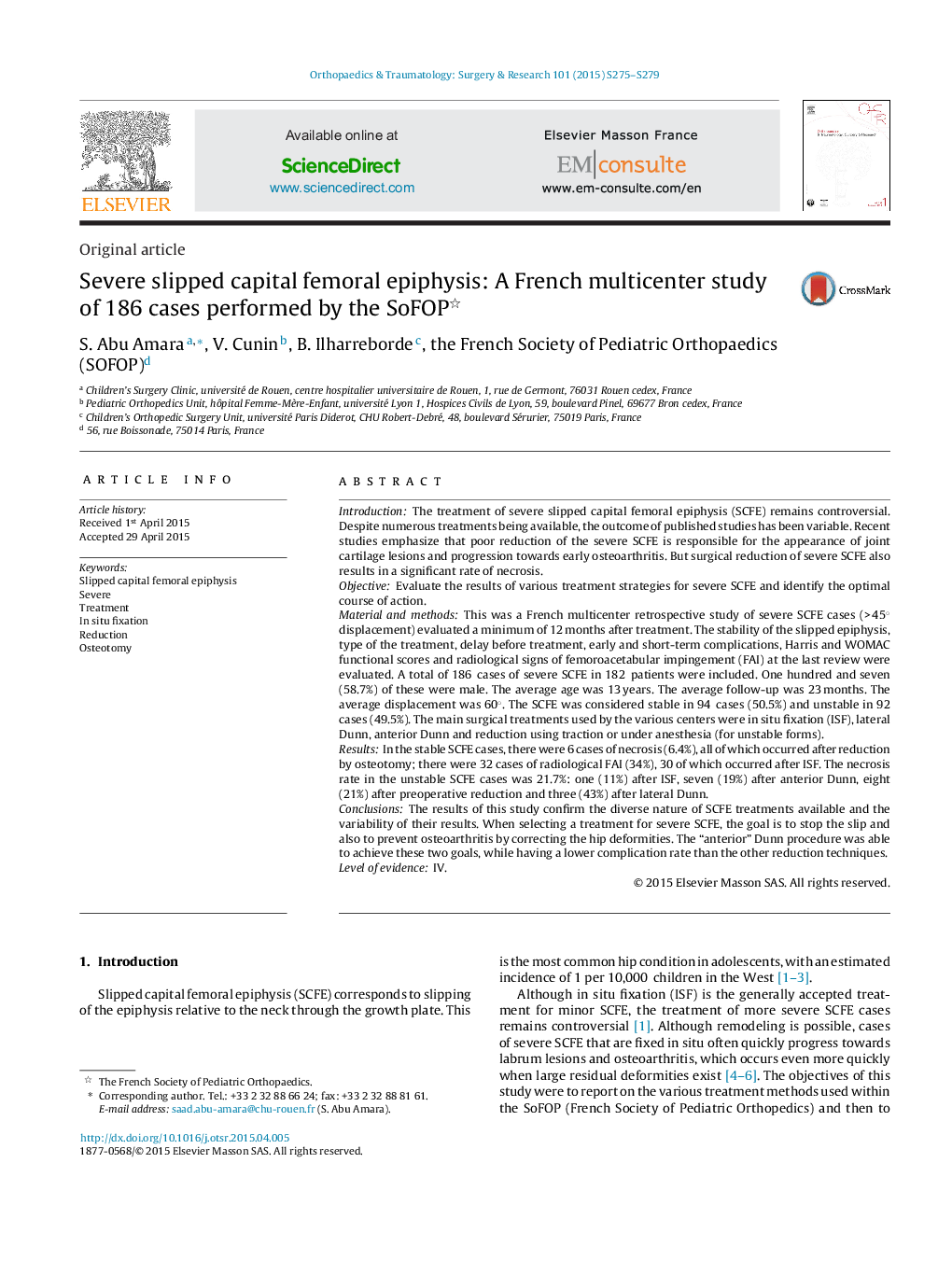| کد مقاله | کد نشریه | سال انتشار | مقاله انگلیسی | نسخه تمام متن |
|---|---|---|---|---|
| 4080916 | 1267571 | 2015 | 5 صفحه PDF | دانلود رایگان |

IntroductionThe treatment of severe slipped capital femoral epiphysis (SCFE) remains controversial. Despite numerous treatments being available, the outcome of published studies has been variable. Recent studies emphasize that poor reduction of the severe SCFE is responsible for the appearance of joint cartilage lesions and progression towards early osteoarthritis. But surgical reduction of severe SCFE also results in a significant rate of necrosis.ObjectiveEvaluate the results of various treatment strategies for severe SCFE and identify the optimal course of action.Material and methodsThis was a French multicenter retrospective study of severe SCFE cases (> 45° displacement) evaluated a minimum of 12 months after treatment. The stability of the slipped epiphysis, type of the treatment, delay before treatment, early and short-term complications, Harris and WOMAC functional scores and radiological signs of femoroacetabular impingement (FAI) at the last review were evaluated. A total of 186 cases of severe SCFE in 182 patients were included. One hundred and seven (58.7%) of these were male. The average age was 13 years. The average follow-up was 23 months. The average displacement was 60°. The SCFE was considered stable in 94 cases (50.5%) and unstable in 92 cases (49.5%). The main surgical treatments used by the various centers were in situ fixation (ISF), lateral Dunn, anterior Dunn and reduction using traction or under anesthesia (for unstable forms).ResultsIn the stable SCFE cases, there were 6 cases of necrosis (6.4%), all of which occurred after reduction by osteotomy; there were 32 cases of radiological FAI (34%), 30 of which occurred after ISF. The necrosis rate in the unstable SCFE cases was 21.7%: one (11%) after ISF, seven (19%) after anterior Dunn, eight (21%) after preoperative reduction and three (43%) after lateral Dunn.ConclusionsThe results of this study confirm the diverse nature of SCFE treatments available and the variability of their results. When selecting a treatment for severe SCFE, the goal is to stop the slip and also to prevent osteoarthritis by correcting the hip deformities. The “anterior” Dunn procedure was able to achieve these two goals, while having a lower complication rate than the other reduction techniques.Level of evidenceIV.
Journal: Orthopaedics & Traumatology: Surgery & Research - Volume 101, Issue 6, Supplement, October 2015, Pages S275–S279